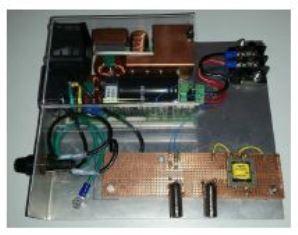Internationale Partnersuche
Innovation & Technologie Angebot
Power factor correction as communication interface
Country of Origin: Germany
Reference Number: TODE20170822002
Publication Date: 13 October 2017
Summary
A German university developed a new process that extends circuitry for power factor correction in switching power supplies and charge rectifiers to intelligent communication interfaces. The electric current power line communication can be integrated into the power supply of a load and send data to a control system. The university is offering a license agreement and a research cooperation agreement.
Description
In today's - and more important - in the future electricity grid, there will be an increasing number of small energy feeders, so that grid regulation becomes more complex. In order to be able to integrate consumers into control systems in a user-friendly manner, it is necessary to know which consumers and feeders are currently connected to the grid or which are located in a particular part of the network. In order to send small data packages for user authentication to a communication or control unit, particularly current-modulated data are suitable. These are virtually uninterrupted and can only be detected within limited network areas.
A German university developed an electric current power line communication (ECPLC). It is a new process that extends circuitry for power factor correction in switching power supplies and charge rectifiers to intelligent communication interfaces. Due to the particular propagation characteristics of the messages, only control systems can receive the messages along the path from user to area network station and couple with the load. PFC circuits suitable for this method are typically integrated into all devices with a power consumption of 75 watts or more to meet the electromagnetic compatibility (EMC) directive.
ECPLC can be integrated into the power supply of a load and send data, e. g. coupling messages for control and billing systems in the electro mobility, to a control system. Systems that have so far used QR codes and radio-frequency identification (RFID) / Near Field Communication (NFC) tags for a user log on can now convert to plug and play devices (for example electric mobility load points). In addition, current operating conditions such as the current power consumption of the end user or the operating range of a PV inverter can also be transmitted. ECPLC is particularly suitable for the construction of intelligent-energy and network-bottleneck management systems as well as the construction of billing systems.
The university is offering a license agreement and a research cooperation agreement in order to enhance this technology and applications. This profile addresses producers of power electronic cicuits and companies active in the field of smart grids.

Advantages and Innovations
In comparison to current procedures this invention enhances and improves communication interfaces with regard to capability and security. The advantages in detail are:
- Switching power device as communication interface
- Terminal identification and coupling with control and metering systems with switching power supplies
- Alternative identification method for RFID / NFC and QR codes
- High safety from interception
- Limited data spread on the line
- Additional data for grid control
- Increase of grid stability
- Low effort for implementation
Stage Of Development
Field tested/evaluated
Stage Of Development Comment
The method has been experimentally verified.
Requested partner
The university is offering a license agreement and a research cooperation agreement in order to enhance this technology and the application further. Partners could be companies that need to improve the capacities of their products or services. This profile mainly addresses producers of power electronic cicuits and companies active in the field of smart grids.
Cooperation offer ist closed for requests

